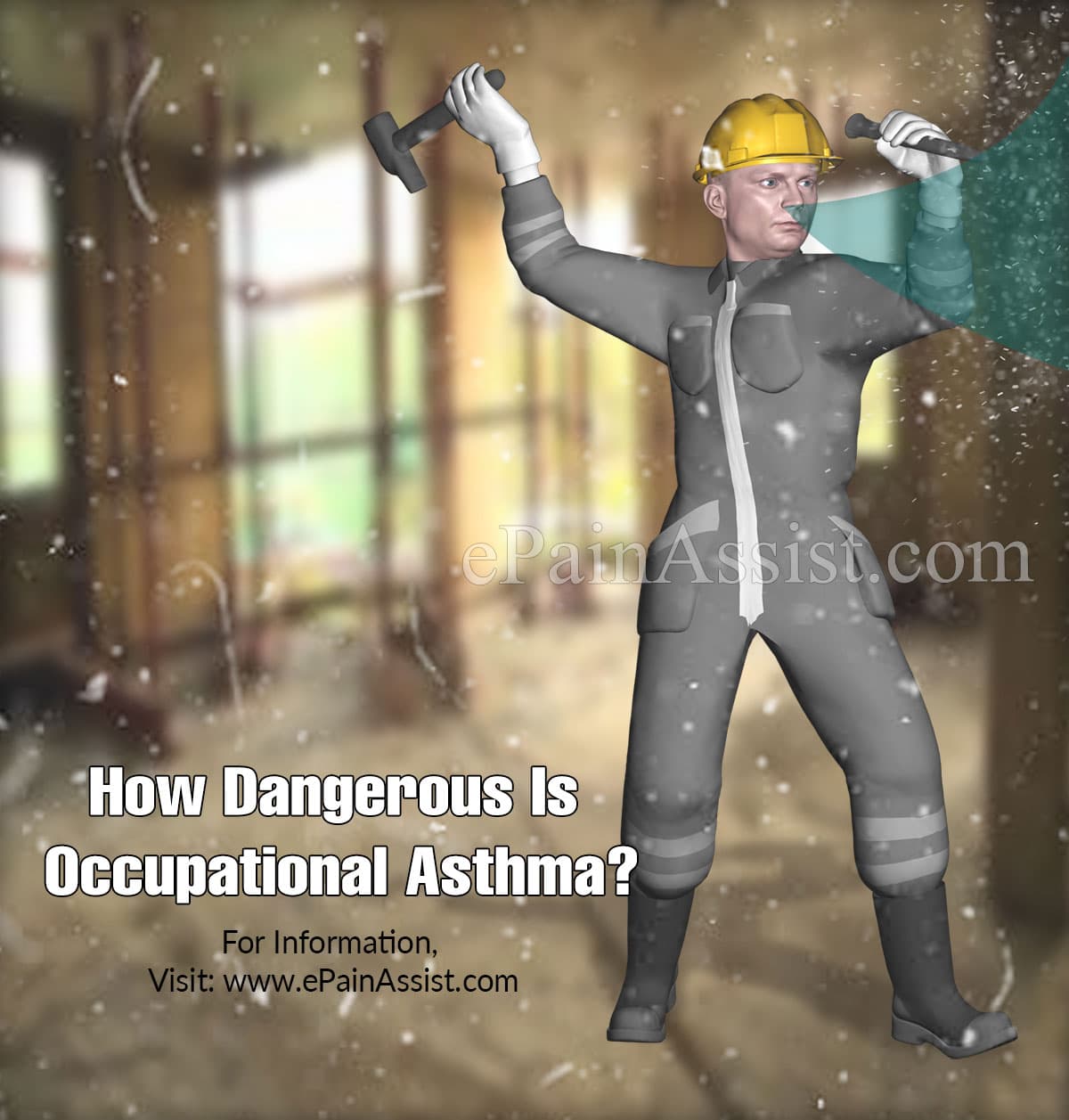Asthma is a type of chronic lung disease and it characterizes varieties of reversible airways inflammations i.e. bronchi. The inflammation mainly takes place because of a weak immune system and it leads to narrowing of the affected person’s airways, also referred to as bronchoconstriction. Common problems are breathing shortness, cough, wheezing and tightening of the chest. Occupational asthma is a specific type of asthma and it mainly takes place because of the exposure to a specific substance or different types of substances present in the workplace.

How Dangerous Is Occupational Asthma?
Whether the problem of occupational asthma is dangerous or not depends on the underlying symptoms and the extent, up to which they last, along with certain risk factors. Other than this, we can say whether the problem is dangerous based on its prognosis.
Occupational Asthma Prognosis
Occupational asthma may continue to become worse if you consistently expose to various substances, which intend to cause problems. Even you opt to intake certain medicines to manage or overcome your symptoms your conditions become worse consistently. Instead, you have to switch your job. In some cases, your symptoms will continue even the substance/substances are removed. In most of the cases, the outcome in the case of occupational asthma is fair. However, symptoms related to the problem will continue for many years even when you no longer experience such substances in your workplace.(3)
Symptoms Of Occupational Asthma
Symptoms associated with occupational asthma are similar to the ones, caused in the case of other forms of asthma. These are-
- Wheezing during the nighttime
- Breathing shortness
- Coughing
- Chest tightness
Excluding this, patients have a few of the additional signs and symptoms-
- Nasal congestion
- Runny nose
- Tearing and irritation in eyes
How Long Do The Symptoms Of Occupational Asthma Last?
Symptoms associated with occupational asthma depend on various substances you are exposed to and the frequency of your exposure. Also, the symptoms may depend on additional factors. In most of the cases, your symptoms-
- Become worse with the progress of workweeks, go away during your vacations and weekends, while recur whenever you get back to your work.
- Infected people may experience the problem both while staying at work and staying away from it.
- Symptoms begin as soon as you expose to any type of asthma-related substance available at your workplace and after regular exposure to the respective substance for a specific period.
- Your symptoms will continue even after your exposure to any of the affected substances stop. If you remain exposed to affected substances for a long time, you will have permanent or long-lasting asthma-related symptoms.(2)
Types Of Occupational Asthma
Occupational asthma mainly takes place as two different types i.e.
Immune-Mediated Asthma: In the case of immune-mediated asthma, a particular type of agent stimulates the immune system of one’s body. This type of occupational asthma has a certain latency period between the exposure to the workplace and the commencement of the underlying symptoms. The latency period may start from only a few weeks to many years.
Irritant Induced Asthma: In the case of irritant induced asthma, the agent will cause irritation to the airways directly. In most of the cases, irritant-induced type of occupational asthma results in immediate exposure of the underlying symptoms.(1)
Risk Factors Of Occupational Asthma
Workers in hospitals, clinics and bakeries, and other service centers remain at a relatively high risk to suffer from occupational asthma. These types of asthma problems mainly take place from your exposure or irritants or allergens present on your job. Such exposures lead to many new cases related to asthma i.e. new-onset asthma or make existing asthma worse i.e. work-aggravated asthma. Especially, a person may suffer from occupational asthma from dust that comes from grains, flours and wood, specific molds, latex gloves, insects and animals.
Conclusion
To conclude, we should say that occupational asthma is not dangerous. However, if you leave it untreated, your symptoms may become worse. Also, you have to consider switching your job or at least reducing your working hours to improve your symptoms as soon as possible.
Also Read:
- What To Eat And Avoid When You Have Occupational Asthma?
- Can You Die From Occupational Asthma & Is There A Surgery For It?
- How Do You Stop Occupational Asthma From Spreading?
- Can Isocyanates Cause Occupational Asthma?
- What Are The First Symptoms Of Occupational Asthma & How Do You Test For It?
- What Triggers Occupational Asthma & What Is The Prognosis For It?
- Coping Methods For Occupational Asthma
